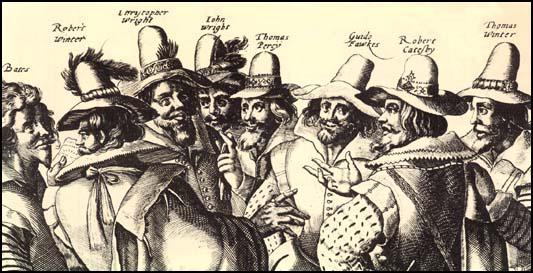Robert Wintour
Robert Wintour, the son of George Wintour, was born in 1565. His father had hop yards and 25 salt-evaporating pans at Droitwich. Robert inherited these estates when his father died in 1594.
Wintour married Gertrude Talbot, daughter of Sir John Talbot, one of the richest men in Worcestershire. Talbot was a Roman Catholic and had spent over 20 years in prison for his beliefs.
In 1605 Robert Catesby devised the Gunpowder Plot, a scheme to kill James and as many Members of Parliament as possible. Catesby planned to make the king's young daughter, Elizabeth, queen. In time, Catesby hoped to arrange Elizabeth's marriage to a Catholic nobleman. Over the next few months Catesby recruited Robert and his brother Thomas Wintour, to join the conspiracy.

Catesby's plan involved blowing up the Houses of Parliament on 5 November. This date was chosen because the king was due to open Parliament on that day. At first the group tried to tunnel under Parliament. This plan changed when a member of the group was able to hire a cellar under the House of Lords. The plotters then filled the cellar with barrels of gunpowder. Guy Fawkes was given the task of creating the explosion.
One of the people involved in the plot was Francis Tresham. He was worried that the explosion would kill his friend and brother-in-law, Lord Monteagle. Tresham therefore sent Lord Monteagle a letter warning him not to attend Parliament on 5 November.
Lord Monteagle became suspicious and passed the letter to Robert Cecil, the king's chief minister. Cecil quickly organised a thorough search of the Houses of Parliament. While searching the cellars below the House of Lords they found the gunpowder and Guy Fawkes. He was tortured and he eventually gave the names of his fellow conspirators.
Robert Wintour went on the run and found refuge at the house of Humphrey Littleton. He was betrayed to the authorities by John Fynwood, one of the family's servants, and was captured on 9th January, 1606. He was executed along with Thomas Bates in London on 30th January, 1606.
